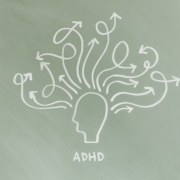Why Medication Alone Doesn’t Work for ADHD — And What to Do Instead
You’ve tried the traditional route. The diagnosis. The prescriptions. The behavior charts. Maybe things got a little better… but the real struggles never disappeared.
The meltdowns, the focus issues, the emotional rollercoasters—they’re still there. And deep down, you know there has to be something more. The truth is that many ADHD treatments only focus on managing the symptoms. Rarely do these approaches look at what’s happening beneath the surface.
So, in this article, we break down why medication alone often isn’t enough to help your child truly thrive—and how a neurologically-focused approach can finally get to the root cause, bringing more calm, focus, and connection into your child’s life.
What’s Missing in Traditional ADHD Treatment?
About seven million children in the United States have been diagnosed with ADHD. Over half of these children are on medication for it, but medication doesn’t address what’s actually causing those symptoms in the first place. As a result, many parents find themselves constantly adjusting medications, switching prescriptions, or managing frustrating side effects like:
- Emotional ups and downs
- Sleep disturbances
- Loss of appetite
- “Zombie-like” behavior
- Increased anxiety or irritability
Yet, what’s often missing in this approach is a deeper understanding of your child’s nervous system. ADHD symptoms are often signs that the brain and body are stuck in a stressed, imbalanced state—not a medication deficiency.
How Can Chiropractic Care Help?
At the root of many ADHD-related behaviors is a complex interaction between the brain, body, and nervous system. Rather than being purely a behavioral issue, many children exhibit signs of nervous system dysregulation—something that is often overlooked in traditional care models. In our office, we frequently identify three underlying contributors: spinal subluxations, autonomic nervous system imbalance, and vagus nerve dysfunction.
When there are misalignments or restrictions in the spine—often resulting from birth trauma, developmental stress, or early injuries—they can interfere with the way the brain and body communicate. This disruption creates excess “noise” in the nervous system, making it difficult for a child to focus, stay calm, or regulate their emotions effectively.
If this interference continues, it can shift the autonomic nervous system into a chronic state of sympathetic dominance—commonly known as “fight or flight.” Children in this state may appear hyperactive, impulsive, or emotionally reactive, not because of defiance, but because their nervous system is overwhelmed.
In addition, the vagus nerve—responsible for activating the body’s “rest and regulate” response—often shows signs of underperformance in children struggling with ADHD-related symptoms. When vagal tone is low, children may experience difficulty calming down, processing emotions, or engaging socially.
So, if you’re tired of the guesswork or medications that don’t seem to address the problems you and your child are facing, it might be time to take a different approach. At Highest Health Chiropractic, your Sioux Falls Chiropractor is ready to help. Together, we can help support your child in the best way possible. Book your appointment today.






